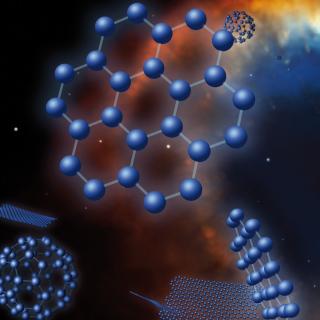Bibcode
Gómez-Muñoz, M. A.; Bianchi, L.; Manchado, A.
Bibliographical reference
The Astrophysical Journal Supplement Series
Advertised on:
6
2023
Citations
12
Refereed citations
9
Description
Planetary nebulae (PNs) consist of an ionized envelope surrounding a hot central star (CSPN) that emits mostly at ultraviolet (UV) wavelengths. UV observations, therefore, provide important information on both the CSPN and the nebula. We have matched the PNs in the Hong Kong/Australian Astronomical Observatory/Strasbourg Hα catalog with the Galaxy Evolution Explorer (GALEX) UV sky surveys, the Sloan Digital Sky Survey (SDSS) data release 16, and the Panoramic Survey Telescope and Rapid Response System (Pan-STARRS) PS1 second release. A total of 671 PNs were observed by GALEX with the far-UV (FUV; 1344 Å-1786 Å) and/or the near-UV (NUV; 1771 Å-2831 Å) detectors on (GUVPNcat); 83 were observed by SDSS (PNcatxSDSSDR16) and 1819 by Pan-STARRS (PNcatxPS1MDS). We merged a distilled version of these matched catalogs into GUVPNcatxSDSSDR16xPS1MDS, which contains a total of 375 PNs with both UV and optical photometry over a total spectral coverage of ~1540 Å-9610 Å. We analyzed separately 170 PNs resolved in GALEX images and determined their UV radius by applying a flux profile analysis. The CSPN flux could be extracted separately from the PN emission for 8 and 50 objects with SDSS and Pan-STARRS counterparts, respectively. The multiband photometry was used to distinguish between compact and extended PNs and CSPNs (binary CSPNs) by color-color diagram analysis. We found that compact PN candidates could be identified by using the r - i < - 0.4 and -1 < FUV-NUV < 1 colors, whereas binary CSPN candidates in given T eff ranges (all with color r-i > -0.4) can be identified in the color region (FUV-NUV) ≤ 6(r-i)+1.3, -0.8 < FUV-NUV < 0.4, and r-i < 0.75.
Related projects

Nucleosynthesis and molecular processes in the late stages of Stellar Evolution
Low- to intermediate-mass (M < 8 solar masses, Ms) stars represent the majority of stars in the Cosmos. They finish their lives on the Asymptotic Giant Branch (AGB) - just before they form planetary nebulae (PNe) - where they experience complex nucleosynthetic and molecular processes. AGB stars are important contributors to the enrichment of the
Domingo Aníbal
García Hernández